


20 July 2024
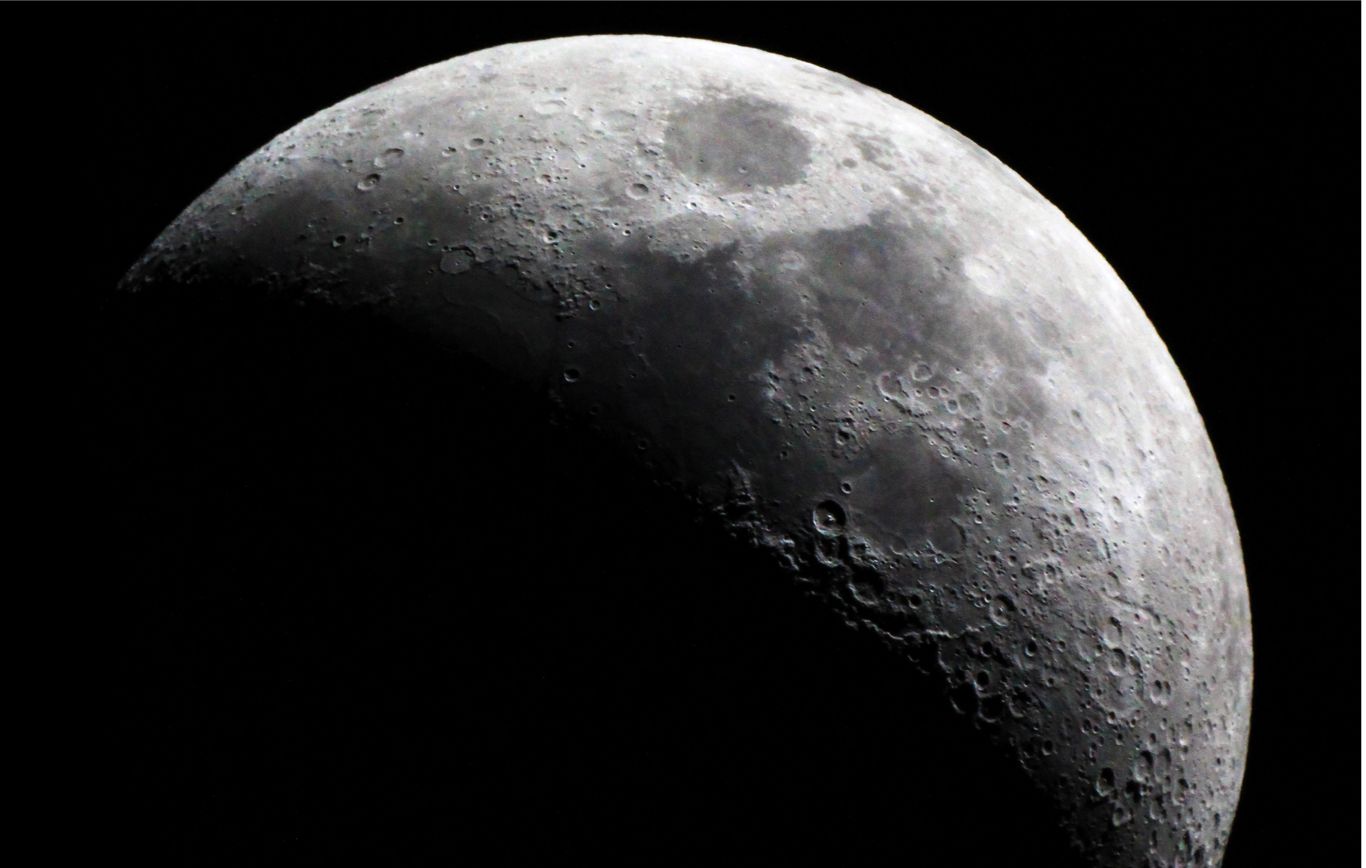
(Image: Adobe)
On July 20th, national agencies, private entities and the United Nations Office for Outer Space Affairs will celebrate International Moon Day, providing an opportunity to reflect on the successes achieved so far this year. This includes not only three successful lunar landings but also the tireless efforts at the UN to establish dialogue and build mechanisms to ensure a peaceful and sustainable future on the Moon.
On June 18th, the UN held the first Conference on Sustainable Lunar Activities, bringing together representatives from national agencies, industry, and academia. While the conference marked the first-of-its-kind event, its outcome proved that all sides align on a number of key issues related to safety, interoperability, the peaceful uses of the Moon, and the need to remain in alignment with UN law, namely the Outer Space Treaty.
One solution in particular was discussed frequently at the conference: the proposal submitted by Romania in February, calling for an Action Team on Lunar Consultation (ATLAC) as a measure to enhance coordination and transparency on the Moon.
ATLAC is designed to provide a consultative mechanism at the UN level, allowing operators on the Moon to engage in consultations related to the coordination of activities, improving safety, protecting the lunar environment, accessing lunar resources, mitigating debris, and sharing best practices.
After attending the conference, my colleague and I were encouraged by the widespread support for ATLAC, with endorsements from government officials, agency representatives, and industry leaders. Following their annual meeting, the UN Committee on the Peaceful Uses of Outer Space (COPUOS) formally established the ATLAC proposal. Over the next two to three years, this initiative aims to foster global cooperation and coordination on lunar activities through expert consultations and recommendations.
ATLAC may take some time to fully develop, and several issues remain, such as legal questions regarding the ownership of lunar resources, regulation of commercial entities, and the appropriation of lunar territory (including the use of safety zones). Nonetheless, the establishment of ATLAC should be celebrated as a significant step towards creating a platform to address these matters.
Intuitive Machines, Astrobotic test for upcoming missions, ESA plan for first sovereign lunar mission
July 20th also offers an opportunity to reflect on the technical achievements in lunar exploration since the start of the year. Astrobotic’s Peregrine One mission, launched on January 8th, aiming to become the first commercial company to achieve a soft landing on the Moon. Unfortunately, the mission failed due to a propellant leak, which prevented the company from completing its primary objective. However, they were able to power up some of the payloads and cover the distance required to reach the Moon, as well as taking away valuable lessons learnt in preparation for their second mission.
This week, Astrobotic provided updates regarding their LunaGrid project, announcing the start of a summer-long test campaign of their VSAT Optimized for Lunar Traverse (VOLT). The VOLT rover is fitted with a vertical solar array and is designed to traverse the lunar surface, providing power-charging facilities for other vehicles, robotics, and habitats. Astrobotic aims to demonstrate elements of LunaGrid on the Moon by 2026, with the first fully operational LunaGrid service by 2028.
On February 22nd, Intuitive Machines achieved what Astrobotic set out to do, and became the first commercial entity to land softly on the Moon. Their Nova-C lander made history, while also delivering several innovate technology demonstrations, such as the first ever data storage test from the Moon’s surface, by Lonestar Data Holdings (US). This week the company also announced that they have completed a full-duration hot-fire test of their IM-2 VR900 engine, while completing the construction of their second lander. The IM-2 mission is due to launch in late 2024.
After the successful launch of the IM-1 mission, it was reported that ESA contacted Intuitive Machines regarding potentially securing their services for a lunar mission. However, it has emerged this week that ESA has taken a significant step forward in establishing their own sovereign lunar transport systems, announcing a launch date of 2031 for their Argonaut cargo lander. Moreover, the lander will launch with Europe’s Ariane-6 rocket, which carried out its first launch just last week.
This is a significant moment for ESA, which has long been striving for independent access to space. Nonetheless, with a launch date around seven years off, it’s likely that they will lean on commercial and international partners to send their payloads to the Moon in the meantime.
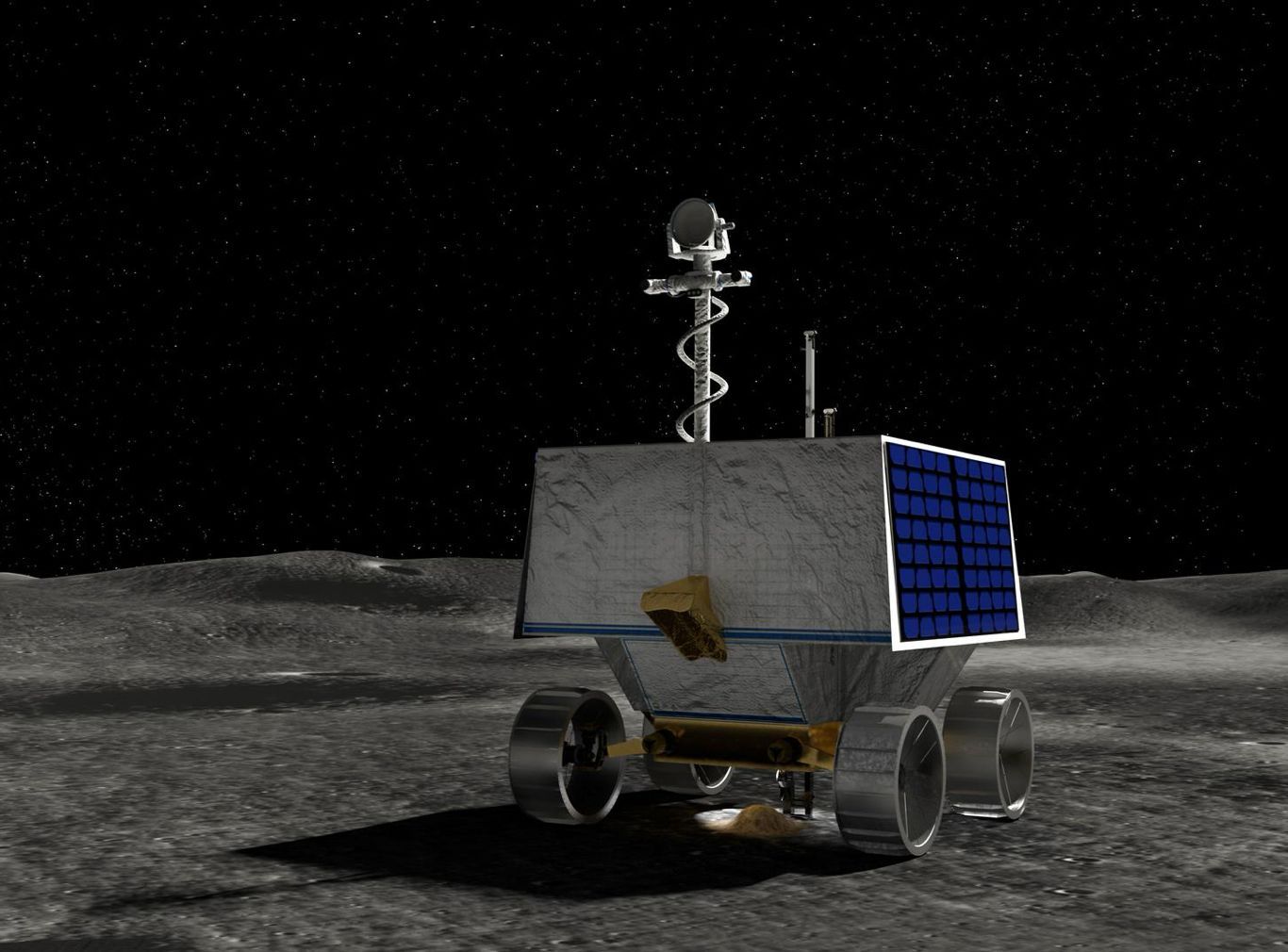
Illustration of VIPER (NASA/Daniel Rutter)
VIPER rover cancellation and value of international partnerships
NASA may not see Moon Day as an opportunity to be entirely celebratory. On Thursday, the agency announced the cancellation of their highly anticipated VIPER lunar rover mission, which was scheduled to launch as early as the end of this year. The large rover, roughly the size of a small car, was set to travel to the lunar south pole with Astrobotic’s second landing attempt aboard their Griffin lander
The Volatiles Investigating Polar Exploration Rover (VIPER) mission was set to explore the permanently shadowed regions of the lunar south pole to better understand the extent and form of water ice in those areas.
Although the rover has already been built, the project has been canceled due to development delays and cost overruns. NASA officials reported that costs had increased by over 30%. Despite the rover being complete, it had not yet undergone environmental testing, which often reveals additional problems that need to be addressed.
The cancellation is a timely reminder of NASA’s need to rely on commercial entities to support their near- and long-term plans for space. The story of VIPER is somewhat reminiscent of their Mars Sample Return (MSR) program, which has also faced delays and increasing costs. As a result, NASA has reached out to the commercial sector to provide potential solutions for MSR.
Similarly, before dismantling VIPER for components to be reused, NASA has reached out to industry and international partners to see if anyone would be willing to transport VIPER to the Moon without incurring additional costs.
Cooperation and competition in the space industry: NASA sign Saudi deal, US Space invite British counterpart to leadership role
Cooperation is vital for success in space exploration. The ISS is founded on the principle of cooperation and remains one of the few platforms where Russia and Western partners continue to work together. Similarly, NASA’s Artemis program brings together international partners from Europe, Asia, and the Middle East. China also makes no secret of its aims to create new platforms for global partnerships through their Tiangong space station and the International Lunar Research Station (ILRS) project.
NASA and the US have recently taken steps to expand their partnerships in space, beyond the Artemis Accords regulatory alliance. This week, NASA signed an agreement with Saudi Arabia to "strengthen collaboration" in space.
Furthermore, this month the US Space Force announced UK Air Marshal Paul Godfrey as Assistant Chief of Space Operations, marking the first time a non-U.S. officer has been integrated into such a senior position within the Space Force. Gen. Chance Saltzman stated that this decision is part of a broader strategy he terms “integrated by design” which acknowledges the Space Force’s reliance on partnerships.
Additionally, this week it has been reported that aerospace giants Airbus and Thales Alenia are exploring the integration of parts of their space activities, potentially focusing on satellite technologies, according to insiders. While the specifics of their plans remain unclear, any collaboration between these two companies could result in the creation of a new, highly influential industry leader.
Whether it's establishing transparency in outer space exploration through initiatives like ATLAC, building leadership, or enhancing commercial capabilities, International Moon Day offers a moment to reflect on our achievements. It also serves as a reminder that success in space exploration depends on our ability to work together.

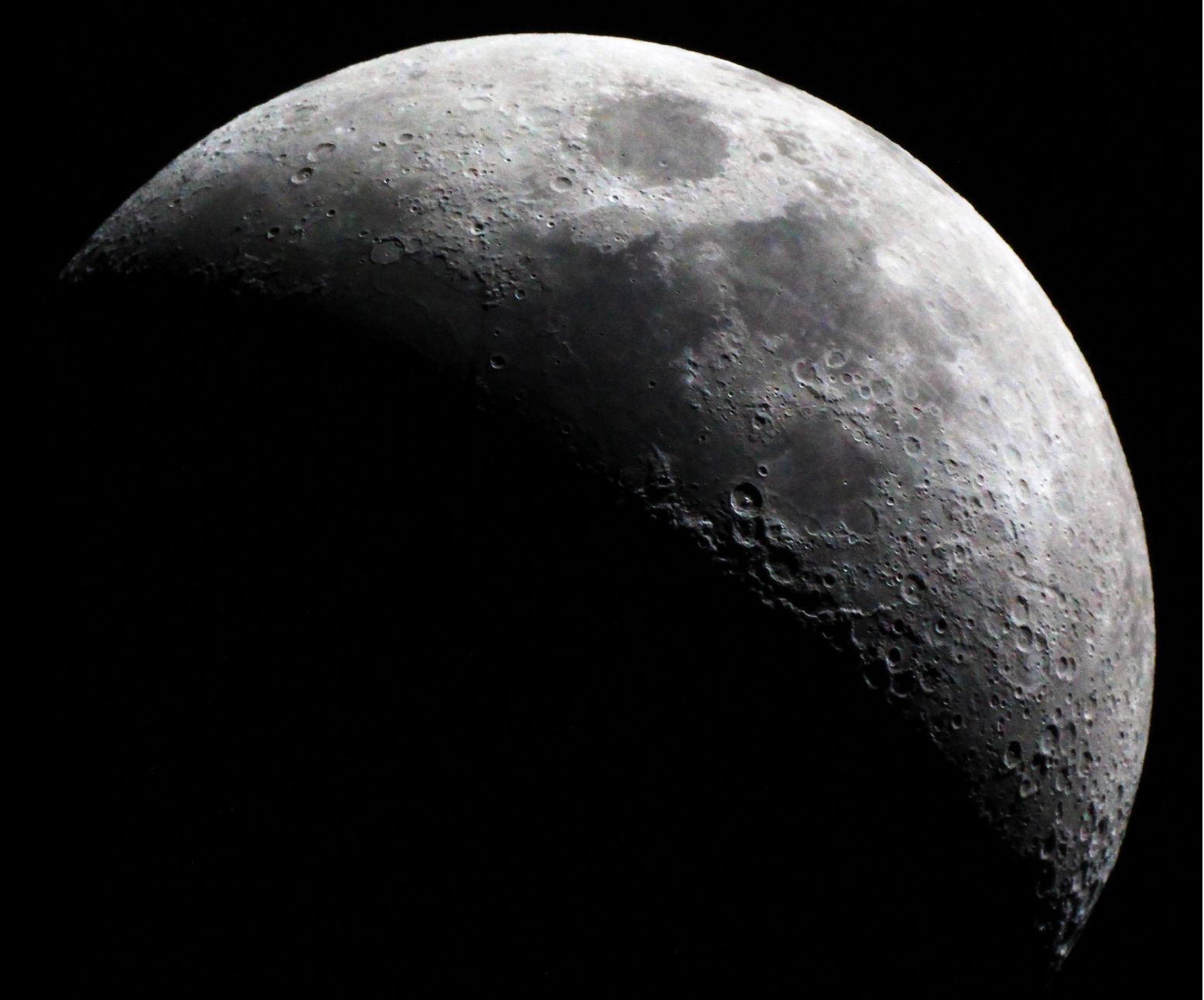
(Image: Adobe)
20 July 2024
International Moon Day: Celebrating Successes, NASA's VIPER Cancellation Setback, and the Increasing Need for Space Collaboration - Space News Roundup

On July 20th, national agencies, private entities and the United Nations Office for Outer Space Affairs will celebrate International Moon Day, providing an opportunity to reflect on the successes achieved so far this year. This includes not only three successful lunar landings but also the tireless efforts at the UN to establish dialogue and build mechanisms to ensure a peaceful and sustainable future on the Moon.
On June 18th, the UN held the first Conference on Sustainable Lunar Activities, bringing together representatives from national agencies, industry, and academia. While the conference marked the first-of-its-kind event, its outcome proved that all sides align on a number of key issues related to safety, interoperability, the peaceful uses of the Moon, and the need to remain in alignment with UN law, namely the Outer Space Treaty.
One solution in particular was discussed frequently at the conference: the proposal submitted by Romania in February, calling for an Action Team on Lunar Consultation (ATLAC) as a measure to enhance coordination and transparency on the Moon.
ATLAC is designed to provide a consultative mechanism at the UN level, allowing operators on the Moon to engage in consultations related to the coordination of activities, improving safety, protecting the lunar environment, accessing lunar resources, mitigating debris, and sharing best practices.
After attending the conference, my colleague and I were encouraged by the widespread support for ATLAC, with endorsements from government officials, agency representatives, and industry leaders. Following their annual meeting, the UN Committee on the Peaceful Uses of Outer Space (COPUOS) formally established the ATLAC proposal. Over the next two to three years, this initiative aims to foster global cooperation and coordination on lunar activities through expert consultations and recommendations.
ATLAC may take some time to fully develop, and several issues remain, such as legal questions regarding the ownership of lunar resources, regulation of commercial entities, and the appropriation of lunar territory (including the use of safety zones). Nonetheless, the establishment of ATLAC should be celebrated as a significant step towards creating a platform to address these matters.
Intuitive Machines, Astrobotic test for upcoming missions, ESA plan for first sovereign lunar mission
July 20th also offers an opportunity to reflect on the technical achievements in lunar exploration since the start of the year. Astrobotic’s Peregrine One mission, launched on January 8th, aiming to become the first commercial company to achieve a soft landing on the Moon. Unfortunately, the mission failed due to a propellant leak, which prevented the company from completing its primary objective. However, they were able to power up some of the payloads and cover the distance required to reach the Moon, as well as taking away valuable lessons learnt in preparation for their second mission.
This week, Astrobotic provided updates regarding their LunaGrid project, announcing the start of a summer-long test campaign of their VSAT Optimized for Lunar Traverse (VOLT). The VOLT rover is fitted with a vertical solar array and is designed to traverse the lunar surface, providing power-charging facilities for other vehicles, robotics, and habitats. Astrobotic aims to demonstrate elements of LunaGrid on the Moon by 2026, with the first fully operational LunaGrid service by 2028.
On February 22nd, Intuitive Machines achieved what Astrobotic set out to do, and became the first commercial entity to land softly on the Moon. Their Nova-C lander made history, while also delivering several innovate technology demonstrations, such as the first ever data storage test from the Moon’s surface, by Lonestar Data Holdings (US). This week the company also announced that they have completed a full-duration hot-fire test of their IM-2 VR900 engine, while completing the construction of their second lander. The IM-2 mission is due to launch in late 2024.
After the successful launch of the IM-1 mission, it was reported that ESA contacted Intuitive Machines regarding potentially securing their services for a lunar mission. However, it has emerged this week that ESA has taken a significant step forward in establishing their own sovereign lunar transport systems, announcing a launch date of 2031 for their Argonaut cargo lander. Moreover, the lander will launch with Europe’s Ariane-6 rocket, which carried out its first launch just last week.
This is a significant moment for ESA, which has long been striving for independent access to space. Nonetheless, with a launch date around seven years off, it’s likely that they will lean on commercial and international partners to send their payloads to the Moon in the meantime.
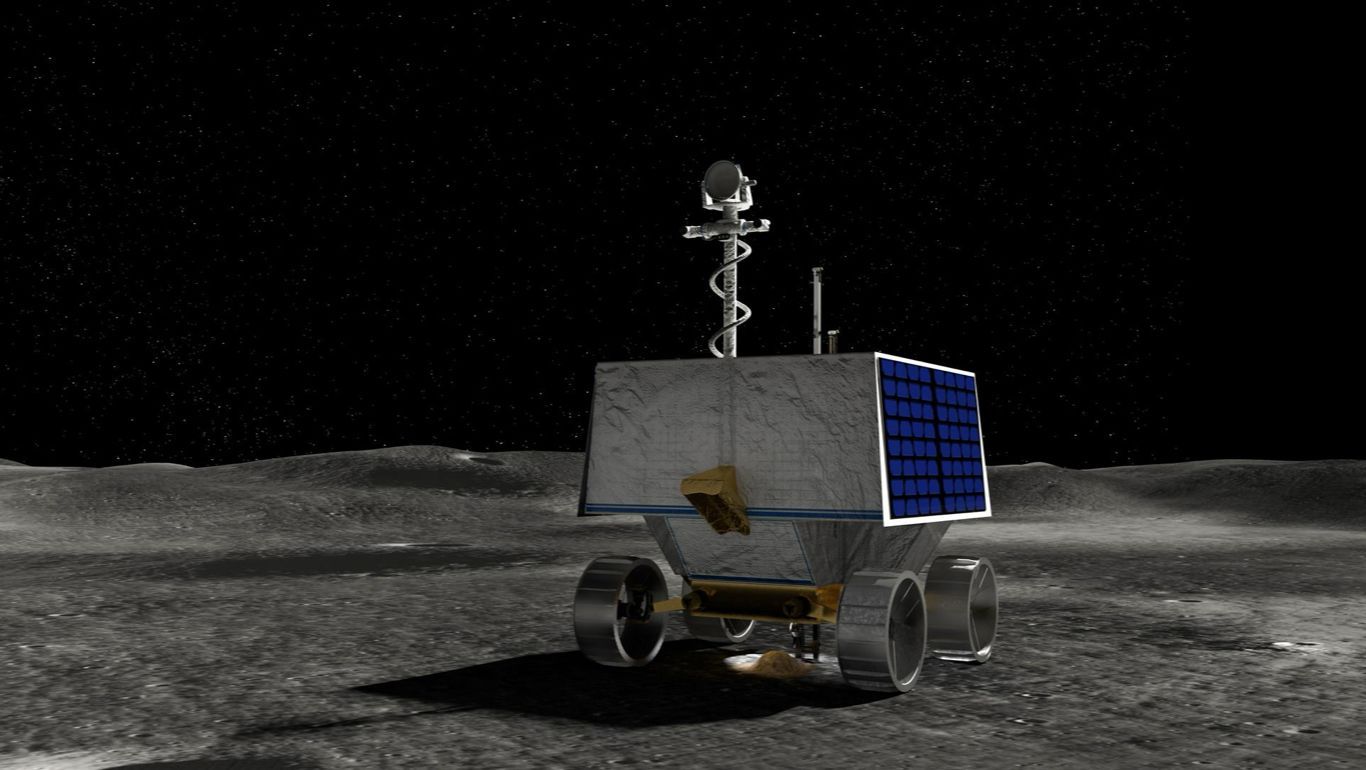
Illustration of VIPER (NASA/Daniel Rutter)
VIPER rover cancellation and value of international partnerships
NASA may not see Moon Day as an opportunity to be entirely celebratory. On Thursday, the agency announced the cancellation of their highly anticipated VIPER lunar rover mission, which was scheduled to launch as early as the end of this year. The large rover, roughly the size of a small car, was set to travel to the lunar south pole with Astrobotic’s second landing attempt aboard their Griffin lander
The Volatiles Investigating Polar Exploration Rover (VIPER) mission was set to explore the permanently shadowed regions of the lunar south pole to better understand the extent and form of water ice in those areas.
Although the rover has already been built, the project has been canceled due to development delays and cost overruns. NASA officials reported that costs had increased by over 30%. Despite the rover being complete, it had not yet undergone environmental testing, which often reveals additional problems that need to be addressed.
The cancellation is a timely reminder of NASA’s need to rely on commercial entities to support their near- and long-term plans for space. The story of VIPER is somewhat reminiscent of their Mars Sample Return (MSR) program, which has also faced delays and increasing costs. As a result, NASA has reached out to the commercial sector to provide potential solutions for MSR.
Similarly, before dismantling VIPER for components to be reused, NASA has reached out to industry and international partners to see if anyone would be willing to transport VIPER to the Moon without incurring additional costs.
Cooperation and competition in the space industry: NASA sign Saudi deal, US Space invite British counterpart to leadership role
Cooperation is vital for success in space exploration. The ISS is founded on the principle of cooperation and remains one of the few platforms where Russia and Western partners continue to work together. Similarly, NASA’s Artemis program brings together international partners from Europe, Asia, and the Middle East. China also makes no secret of its aims to create new platforms for global partnerships through their Tiangong space station and the International Lunar Research Station (ILRS) project.
NASA and the US have recently taken steps to expand their partnerships in space, beyond the Artemis Accords regulatory alliance. This week, NASA signed an agreement with Saudi Arabia to "strengthen collaboration" in space.
Furthermore, this month the US Space Force announced UK Air Marshal Paul Godfrey as Assistant Chief of Space Operations, marking the first time a non-U.S. officer has been integrated into such a senior position within the Space Force. Gen. Chance Saltzman stated that this decision is part of a broader strategy he terms “integrated by design” which acknowledges the Space Force’s reliance on partnerships.
Additionally, this week it has been reported that aerospace giants Airbus and Thales Alenia are exploring the integration of parts of their space activities, potentially focusing on satellite technologies, according to insiders. While the specifics of their plans remain unclear, any collaboration between these two companies could result in the creation of a new, highly influential industry leader.
Whether it's establishing transparency in outer space exploration through initiatives like ATLAC, building leadership, or enhancing commercial capabilities, International Moon Day offers a moment to reflect on our achievements. It also serves as a reminder that success in space exploration depends on our ability to work together.
Share this article
20 July 2024
International Moon Day: Celebrating Successes, NASA's VIPER Cancellation Setback, and the Increasing Need for Space Collaboration - Space News Roundup

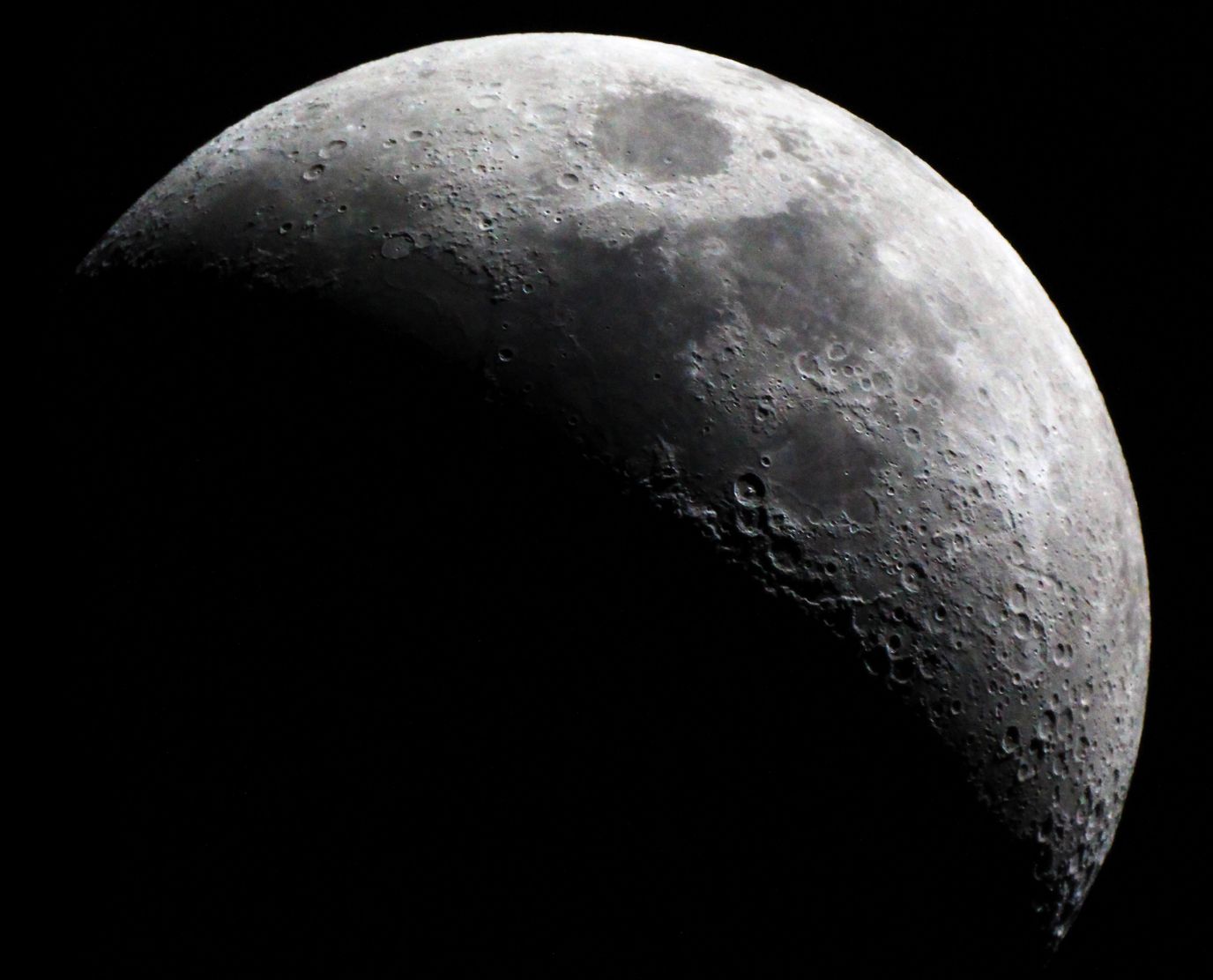
(Image: Adobe)
On July 20th, national agencies, private entities and the United Nations Office for Outer Space Affairs will celebrate International Moon Day, providing an opportunity to reflect on the successes achieved so far this year. This includes not only three successful lunar landings but also the tireless efforts at the UN to establish dialogue and build mechanisms to ensure a peaceful and sustainable future on the Moon.
On June 18th, the UN held the first Conference on Sustainable Lunar Activities, bringing together representatives from national agencies, industry, and academia. While the conference marked the first-of-its-kind event, its outcome proved that all sides align on a number of key issues related to safety, interoperability, the peaceful uses of the Moon, and the need to remain in alignment with UN law, namely the Outer Space Treaty.
One solution in particular was discussed frequently at the conference: the proposal submitted by Romania in February, calling for an Action Team on Lunar Consultation (ATLAC) as a measure to enhance coordination and transparency on the Moon.
ATLAC is designed to provide a consultative mechanism at the UN level, allowing operators on the Moon to engage in consultations related to the coordination of activities, improving safety, protecting the lunar environment, accessing lunar resources, mitigating debris, and sharing best practices.
After attending the conference, my colleague and I were encouraged by the widespread support for ATLAC, with endorsements from government officials, agency representatives, and industry leaders. Following their annual meeting, the UN Committee on the Peaceful Uses of Outer Space (COPUOS) formally established the ATLAC proposal. Over the next two to three years, this initiative aims to foster global cooperation and coordination on lunar activities through expert consultations and recommendations.
ATLAC may take some time to fully develop, and several issues remain, such as legal questions regarding the ownership of lunar resources, regulation of commercial entities, and the appropriation of lunar territory (including the use of safety zones). Nonetheless, the establishment of ATLAC should be celebrated as a significant step towards creating a platform to address these matters.
Intuitive Machines, Astrobotic test for upcoming missions, ESA plan for first sovereign lunar mission
July 20th also offers an opportunity to reflect on the technical achievements in lunar exploration since the start of the year. Astrobotic’s Peregrine One mission, launched on January 8th, aiming to become the first commercial company to achieve a soft landing on the Moon. Unfortunately, the mission failed due to a propellant leak, which prevented the company from completing its primary objective. However, they were able to power up some of the payloads and cover the distance required to reach the Moon, as well as taking away valuable lessons learnt in preparation for their second mission.
This week, Astrobotic provided updates regarding their LunaGrid project, announcing the start of a summer-long test campaign of their VSAT Optimized for Lunar Traverse (VOLT). The VOLT rover is fitted with a vertical solar array and is designed to traverse the lunar surface, providing power-charging facilities for other vehicles, robotics, and habitats. Astrobotic aims to demonstrate elements of LunaGrid on the Moon by 2026, with the first fully operational LunaGrid service by 2028.
On February 22nd, Intuitive Machines achieved what Astrobotic set out to do, and became the first commercial entity to land softly on the Moon. Their Nova-C lander made history, while also delivering several innovate technology demonstrations, such as the first ever data storage test from the Moon’s surface, by Lonestar Data Holdings (US). This week the company also announced that they have completed a full-duration hot-fire test of their IM-2 VR900 engine, while completing the construction of their second lander. The IM-2 mission is due to launch in late 2024.
After the successful launch of the IM-1 mission, it was reported that ESA contacted Intuitive Machines regarding potentially securing their services for a lunar mission. However, it has emerged this week that ESA has taken a significant step forward in establishing their own sovereign lunar transport systems, announcing a launch date of 2031 for their Argonaut cargo lander. Moreover, the lander will launch with Europe’s Ariane-6 rocket, which carried out its first launch just last week.
This is a significant moment for ESA, which has long been striving for independent access to space. Nonetheless, with a launch date around seven years off, it’s likely that they will lean on commercial and international partners to send their payloads to the Moon in the meantime.
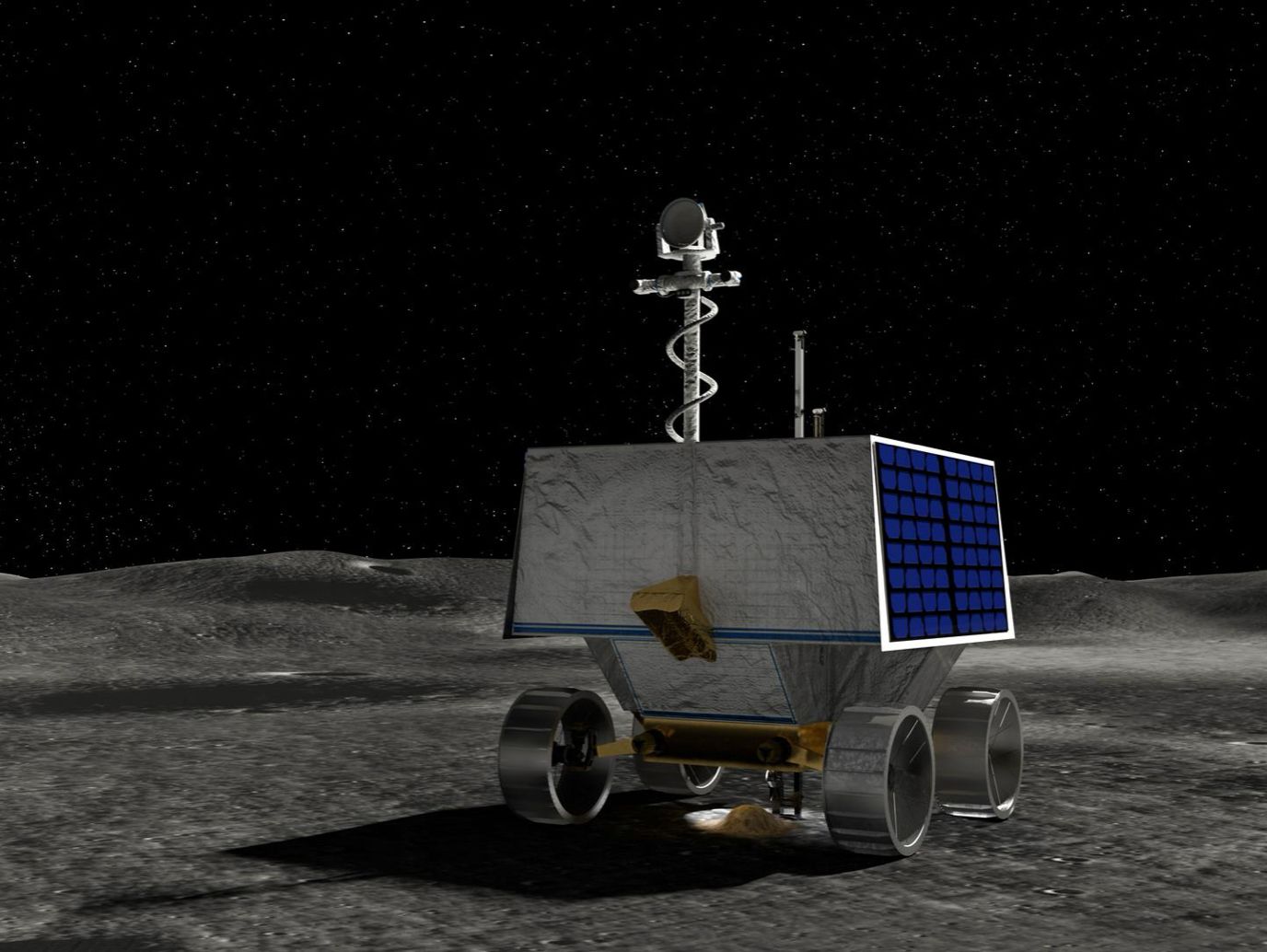
Illustration of VIPER (NASA/Daniel Rutter)
VIPER rover cancellation and value of international partnerships
NASA may not see Moon Day as an opportunity to be entirely celebratory. On Thursday, the agency announced the cancellation of their highly anticipated VIPER lunar rover mission, which was scheduled to launch as early as the end of this year. The large rover, roughly the size of a small car, was set to travel to the lunar south pole with Astrobotic’s second landing attempt aboard their Griffin lander
The Volatiles Investigating Polar Exploration Rover (VIPER) mission was set to explore the permanently shadowed regions of the lunar south pole to better understand the extent and form of water ice in those areas.
Although the rover has already been built, the project has been canceled due to development delays and cost overruns. NASA officials reported that costs had increased by over 30%. Despite the rover being complete, it had not yet undergone environmental testing, which often reveals additional problems that need to be addressed.
The cancellation is a timely reminder of NASA’s need to rely on commercial entities to support their near- and long-term plans for space. The story of VIPER is somewhat reminiscent of their Mars Sample Return (MSR) program, which has also faced delays and increasing costs. As a result, NASA has reached out to the commercial sector to provide potential solutions for MSR.
Similarly, before dismantling VIPER for components to be reused, NASA has reached out to industry and international partners to see if anyone would be willing to transport VIPER to the Moon without incurring additional costs.
Cooperation and competition in the space industry: NASA sign Saudi deal, US Space invite British counterpart to leadership role
Cooperation is vital for success in space exploration. The ISS is founded on the principle of cooperation and remains one of the few platforms where Russia and Western partners continue to work together. Similarly, NASA’s Artemis program brings together international partners from Europe, Asia, and the Middle East. China also makes no secret of its aims to create new platforms for global partnerships through their Tiangong space station and the International Lunar Research Station (ILRS) project.
NASA and the US have recently taken steps to expand their partnerships in space, beyond the Artemis Accords regulatory alliance. This week, NASA signed an agreement with Saudi Arabia to "strengthen collaboration" in space.
Furthermore, this month the US Space Force announced UK Air Marshal Paul Godfrey as Assistant Chief of Space Operations, marking the first time a non-U.S. officer has been integrated into such a senior position within the Space Force. Gen. Chance Saltzman stated that this decision is part of a broader strategy he terms “integrated by design” which acknowledges the Space Force’s reliance on partnerships.
Additionally, this week it has been reported that aerospace giants Airbus and Thales Alenia are exploring the integration of parts of their space activities, potentially focusing on satellite technologies, according to insiders. While the specifics of their plans remain unclear, any collaboration between these two companies could result in the creation of a new, highly influential industry leader.
Whether it's establishing transparency in outer space exploration through initiatives like ATLAC, building leadership, or enhancing commercial capabilities, International Moon Day offers a moment to reflect on our achievements. It also serves as a reminder that success in space exploration depends on our ability to work together.
Share this article

